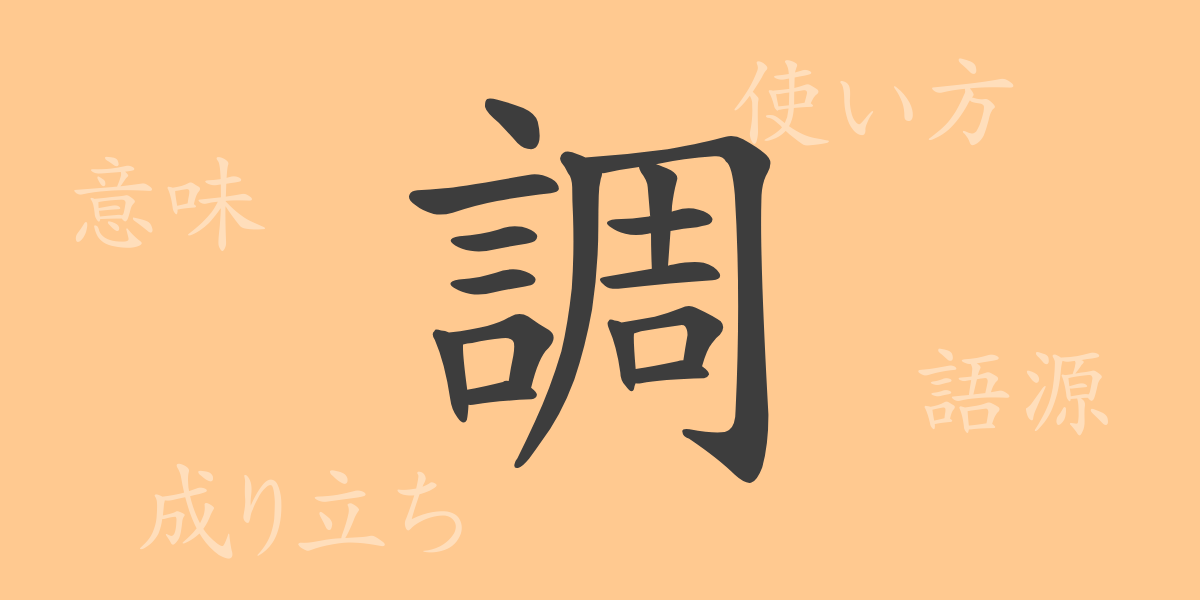The Japanese kanji ‘調(チョウ)’ is known for its versatility and depth, spanning from music to science to everyday conversation. This character illustrates the delicacy of Japanese culture and language. In this article, we delve into the origins, meanings, and uses of ‘調’, and explore the rich expressions it contributes to.
Origins of ‘調(チョウ)’
The kanji ‘調’ originated in ancient China as a word denoting musical harmony. Derived from the concept of tuning sounds, it evolved to signify adjusting, harmonizing, and investigating, among other ‘adjusting’ actions. This character evolved from ideograms symbolizing order and balance.
Meaning and Usage of ‘調(チョウ)’
‘調’ encompasses multiple meanings and is used in various contexts. Commonly, it represents concepts such as ‘harmony’, ‘adjustment’, and ‘investigation’, implying the act of organizing the state or relationship of things. It also appears in words like ‘調子(ちょうし)’ for physical or situational conditions and ‘調理(ちょうり)’ for the process of cooking.
Pronunciation, Stroke Count, and Radical of ‘調(チョウ)’
The kanji ‘調’ reflects the complexity of the Japanese language in its pronunciation and structure:
- Pronunciation: On’yomi ‘チョウ’, Kun’yomi ‘しら.べる’, ‘ととの.う’, ‘ととの.える’
- Stroke Count: 15 strokes
- Radical: ‘言’ (word)
Phrases, Idioms, and Proverbs Using ‘調(チョウ)’
The kanji ‘調’ plays a vital role in Japanese language through various idioms, phrases, and proverbs. Here are some examples:
- ‘調子がいい(ちょうしがいい)’: In a good state or condition.
- ‘調べを入れる(しらべをいれる)’: To conduct a detailed investigation or research.
- ‘調和がとれる(ちょうわがとれる)’: Well-balanced, maintaining a good equilibrium.
- ‘調理する(ちょうりする)’: To prepare and cook food.
- ‘天に唾する(てんにつばする)’: A proverb meaning to act recklessly without assessing one’s capabilities.
Conclusion on ‘調(チョウ)’
The kanji ‘調’ is an indispensable element in the Japanese language, essential for maintaining order and balance in human relationships and society, and frequently used in everyday communication. Through various idioms and phrases, we can see its expressive richness. The breadth and depth of ‘調’ not only reflect the essence of Japanese but also serve as a key to mastering the language for learners.

























